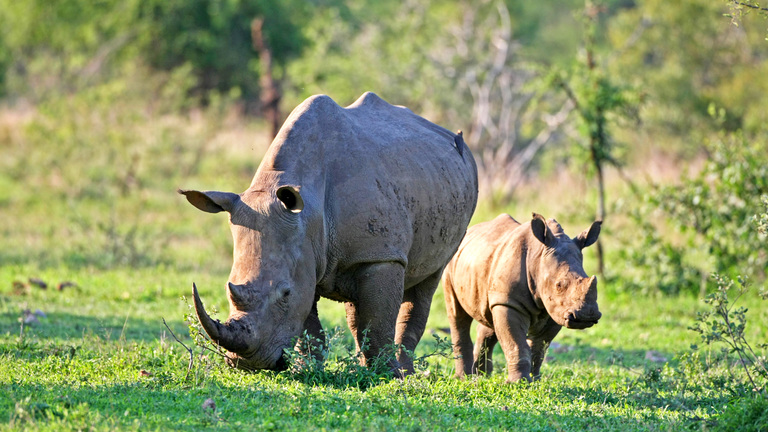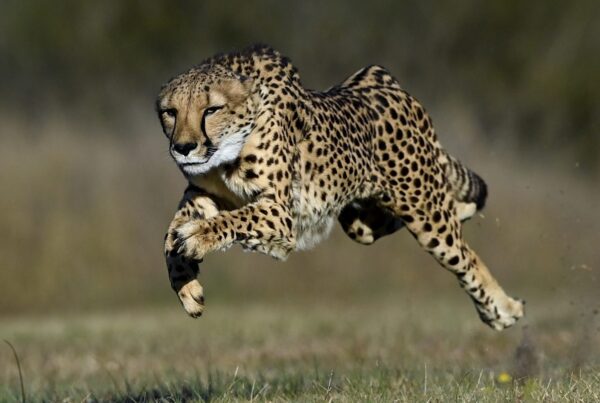The Difference Between a Black and a White Rhino
A Tale of Two Titans: An Iconic Mismatch in Africa’s Wilderness
In the heart of Africa’s untamed wilderness roam two of the continent’s most formidable and awe-inspiring creatures: the Black Rhino and the White Rhino. Towering beasts armored in thick skin, equipped with powerful horns, and revered as ancient symbols of strength and resilience, these rhinos often stir curiosity among safari-goers. Yet despite the misleading labels, the difference between a black and a white rhino is not rooted in color at all.
In fact, both species are more or less the same grey hue. The differences lie deeper—in anatomy, behavior, feeding habits, and evolutionary adaptations. Understanding these nuances not only enhances the safari experience but also deepens our appreciation for conservation efforts surrounding these endangered giants.
Origins of the Name: A Linguistic Misunderstanding
The terminology that labels these two species as “black” and “white” stems from a historical misunderstanding. The name “White Rhino” is believed to be a mistranslation of the Afrikaans word “wyd,” meaning “wide,” in reference to the animal’s broad, flat mouth adapted for grazing. Early English settlers misheard the term and interpreted “wyd” as “white.”
Consequently, the contrasting species was dubbed the “Black Rhino” to differentiate between the two, although it does not possess any significantly darker pigmentation. This accidental naming has persisted, creating a legacy of confusion but also setting the stage for a captivating study in contrasts.
Morphological Differences: Structure and Form
The most immediately noticeable distinction between these rhinos lies in their mouth structure, which correlates directly with their feeding behavior. The White Rhino has a wide, square-shaped lip perfectly suited for grazing on grasses in open savannahs. Its head is typically held low to the ground, supported by a long, muscular neck that facilitates extended periods of foraging.
In contrast, the Black Rhino possesses a pointed, prehensile upper lip designed for browsing shrubs and small trees. This agile lip acts almost like a finger, capable of gripping leaves and twigs with precision. The head of the Black Rhino is carried higher, and its shorter neck is indicative of its adaptation to browsing rather than grazing.
Size is another distinguishing feature. The White Rhino is the larger of the two, often weighing up to 2,300 kilograms, making it the second-largest land mammal after the elephant. Its bulky frame and humped shoulders give it a more imposing appearance. The Black Rhino, though still massive by any measure, is relatively smaller and more compact, typically weighing between 800 and 1,400 kilograms. Its body is more rounded, and its overall appearance suggests a creature built for maneuverability and speed.
Behavioral Contrasts: Temperament and Territory
While both species are solitary by nature, their behaviors and temperaments diverge significantly. White Rhinos are generally more docile and tolerant of human presence, which is why they are more commonly seen on game drives. They are also more social within their species, often found in loose groupings, particularly females with calves. Their home ranges may overlap, and territorial disputes are infrequent.
The Black Rhino, on the other hand, has earned a reputation for being more aggressive and unpredictable. Its solitary nature is more pronounced, and it is less tolerant of intruders, be they other rhinos or humans. Encounters in the wild are rarer and more fleeting. Territoriality is a defining characteristic, and Black Rhinos use scent marking and dung piles to establish boundaries. The heightened aggression is not merely temperament but a survival adaptation in habitats where competition for food and water is intense.
Habitat Preferences and Ecological Roles
These differences in feeding habits and social behavior naturally extend into habitat preferences. White Rhinos prefer open grasslands and savannahs where their wide mouths can efficiently graze on short grasses. Their presence in these ecosystems plays a vital role in grassland maintenance, acting almost as natural lawnmowers that prevent overgrowth and facilitate biodiversity.
Black Rhinos, being browsers, are more commonly found in areas with dense bush, acacia thickets, and scrublands. Their selective feeding on leaves and woody plants helps shape the vegetation structure of these ecosystems. Both species are keystone herbivores, meaning their grazing and browsing behaviors have cascading effects on other species, influencing patterns of vegetation, the distribution of smaller herbivores, and even predator-prey dynamics.
Conservation Challenges: A Shared Struggle
Despite their differences, both rhino species face similar existential threats. Poaching for their horns remains the most pressing danger. The rhino horn, composed of keratin, is highly valued in traditional Asian medicine and as a status symbol. This demand has fueled an illegal trade that decimates rhino populations despite international bans and conservation efforts.
White Rhinos have seen some success in conservation through intensive management, including anti-poaching patrols, habitat protection, and relocation programs. However, the subspecies known as the Northern White Rhino is functionally extinct, with only two known females remaining under constant guard. Southern White Rhinos, while more numerous, still require ongoing protection to prevent their numbers from declining.
Black Rhinos are critically endangered. Their populations are lower than those of their white counterparts, and they have suffered more severely from poaching due to their reclusive nature, which makes conservation monitoring more difficult. Efforts to breed them in captivity, reintroduce them into the wild, and engage local communities in conservation have shown promise but require sustained international support.
Observing the Giants: A Safari Experience Like No Other
For those venturing into Africa’s wilderness, the chance to observe both species in their natural habitats is a rare and profound experience. Watching a White Rhino lumber across the plains or seeing a Black Rhino emerge silently from the brush evokes a sense of wonder and respect that no photograph or documentary can replicate. Their sheer size, the quiet intensity of their movement, and the knowledge of their ancient lineage foster a deep emotional connection with the wild.
Safari guides often emphasize these differences to enrich the experience, helping guests identify tracks, interpret behaviors, and understand ecological significance. Whether it’s in South Africa’s Kruger National Park, Namibia’s Etosha, or Kenya’s Ol Pejeta Conservancy, encountering these giants is a highlight for any wildlife enthusiast.
Protect the Legacy with WildHorn Africa (Black and a White Rhino)
There is no substitute for seeing these magnificent creatures in the wild, and doing so with experts who value ethical tourism and conservation is crucial. WildHorn Africa offers tailored safari experiences that combine adventure with education, ensuring that every journey contributes to the preservation of Africa’s iconic wildlife. By choosing to explore Africa with WildHorn Africa, you are not only fulfilling a dream but also supporting the long-term survival of rhinos and other endangered species.
Book your safari with WildHorn Africa today and take part in a legacy of discovery, reverence, and protection. Witness the contrast, marvel at the similarities, and step into the wild with eyes wide open and heart fully engaged.
Black and a White Rhino #Black and a White Rhino Black and a White Rhino





 WildHorn Africa – Authentic and unforgettable tours across Africa, guided by local experts who know the land, wildlife, and culture best.
WildHorn Africa – Authentic and unforgettable tours across Africa, guided by local experts who know the land, wildlife, and culture best.


